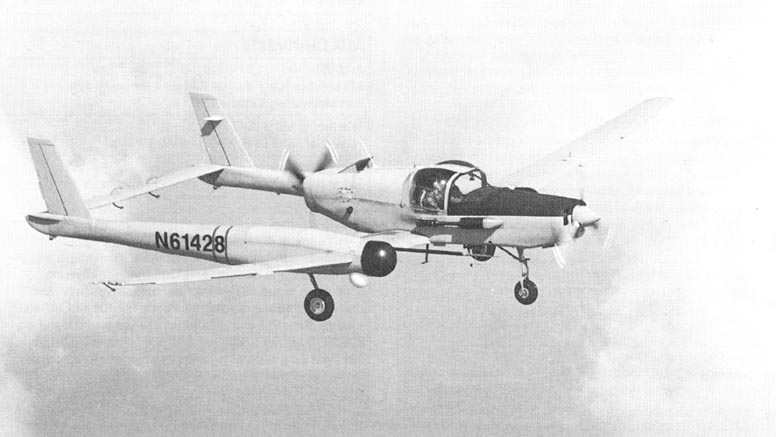


Aircraft of the Month for September 2001

Schweizer RU-38A Twin Condor
by Alex Stoll
B |




B |
Since the RU-38A will be used at low altitudes over water or hostile terrain, the second engine is important to safety as well as providing higher cruise speeds. It uses a full-feathering propellor with accumulator but will be shut down during surveillance to make the RU-38A quieter. The co-pilot, who sits in the left seat in the cockpit, has full flight control and can serve as a backup sensor operator. The RU-38A can be outfitted with a third seat for a dedicated sensor operator behind the pilot-co-pilot seats. Control surfaces are limited to ailerons and upper/lower airbrakes on the wings, horn-balanced rudders on the twin tails, and an elevator on the horizontal tailplane. No flaps are needed. The turbocharged GIO-550A engines use 3:2 gear reduction to 2267 rpm and are "muffled" to reduce sound.
With 140 cubic feet available for surveillance equipment and maximum sensor weight at 800 pounds, the RU-38A is able to carry an AlliedSignal AN/APN-215(V) multi-function X-band sea search radar, mapping and weather radar in a radome below the nose of the port fuselage boom, FLIR, in the starboard boom, LLTV, and a dual recorder. The boom pod sensors are interchangeable. Since the large payload bays take palletized sensors, the RU-38A can quickly switch sensors. Each payload bay is accessed through large access doors. Mission avionics are located in the booms and in behind the cockpit. The RU-38B's flexability allows it to be used in many different roles, including border integrity protection, counter drug activities, intelligence collection, fisheries patrol, environmental monitoring, and SAR.
Avionics include Omega, GPS, Allied Signal Bendix/King KY58 and KY75 communication encryption devices, Wolfsberg RT9600 Maritime band radio, Rockwell Collins ARC-182 VHF/UHF, Allied Signal HF-900 radios, and VHF/UHF direction finders. Night vision goggles are optional.
| Schweizer RU-38A Secifications | |
| Accomodation | Pilot and sensor operator |
| Powerplant | Two Teledyne Continental GIO-55A piston engines, 261 kW (350 hp) each |
| Fuel capacity | 375 liters (100 US gallons) |
| Performance | |
|---|---|
| Cruise speed | 254 km/h (136 kts/157 mph) at 75% power |
| Mission speed | 157-176 km/h (85-95 kts/98-110 mph) |
| Stall speed | 140 km/h (76 kts/87 mph) |
| Takeoff distance | 293 m (960 ft) |
| Landing distance | 412 m (1350 ft) |
| Mission altitude | Below 3050 m (10,000 ft) |
| Ceiling | 7315 m (24,000 ft) |
| Climb rate | 671 m (2200 ft) per minute, or 351 m (1150 ft) per minute with rear engine stopped |
| Duration | 6-10 hours |
| Weights | |
| Empty | 1524 kg (3360 lb) |
| MTOW | 2404 kg (5300 lb) |
| Payload | 408 kg (900 lb) |
| Dimensions | |
| Wingspan | 19.51 m (64 ft) |
| Maximum length | 9.19 m (30 ft 2 in) |
| Wing area | 20.98 m² (225.86 sq ft) |